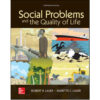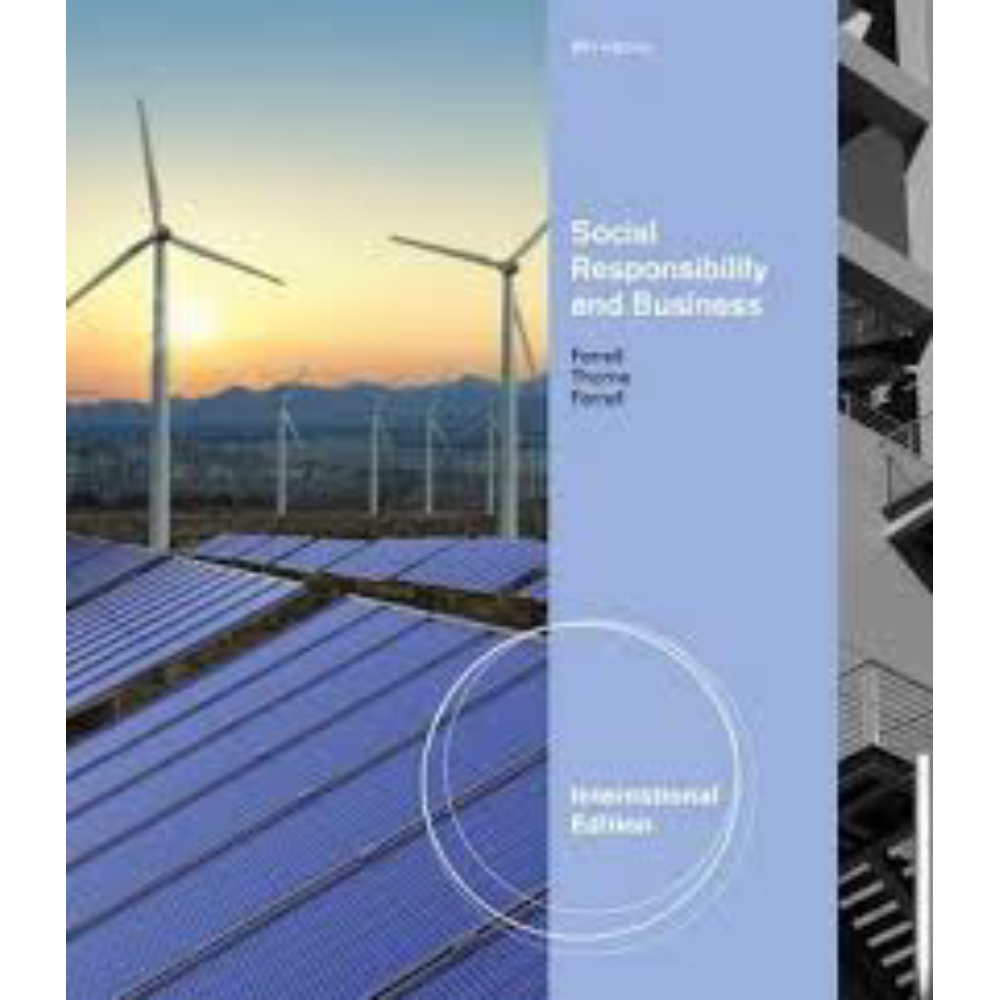Social Responsibility And Business International Edition 4th Edition By O. C. Ferrell – Test Bank
$55.00
Social Responsibility And Business International Edition 4th Edition By O. C. Ferrell – Test Bank
You will receive this product within 24 hours after placing the order
Overview
Chapter 11
Sustainability Issues
Multiple Choice
1. Up until the twentieth century, how did people generally think of the environment?
a. As a beautiful natural resource that needed to be protected from actions that harmed its beauty
b. As nature, including wildlife, trees, oceans, rivers, and mountains
c. In terms of how natural resources could be harnessed to meet the need for food, shelter, and recreation
d. As resources that should be used in unlimited quantities to satisfy the need for shelter, food, and transportation
e. As a resource that dictates how people should live their lives
ANS: C PTS: 1
2. Which of the following best defines the natural environment from a business perspective?
a. The physical world, including all biological entities, as well as the interaction between nature and individuals, organizations, and business strategies
b. The physical world including all biological and geological entities
c. Plants, animals, human beings, oceans and other waterways, land, and the atmosphere
d. Any entity or combination of entities that has an impact on the way that organizations conduct their business
e. Any resource that is found in limited quantities and requires protection through national or state regulation
ANS: A PTS: 1
3. In what decade did environmental concerns start to become a focus of governments around the globe in the form of environmental protection laws?
a. 1910s
b. 1930s
c. 1950s
d. 1970s
e. 1990s
ANS: D PTS: 1
4. Increasing amounts of carbon dioxide and methane in the earth’s atmosphere can result in which negative environmental impact?
a. Acid rain
b. Air pollution
c. Greenhouse melting
d. Kyoto gases
e. Global warming
ANS: E PTS: 1
5. What is the Kyoto Protocol?
a. Specific international standards that every nation must comply with in regards to emission of gases
b. Standards that every nation must comply with in regards to the emission of pollutants into streams and drinking water supplies
c. A controversial treaty proposed among industrialized nations to slow global warming
d. A United States law that regulates the emission of harmful gases into the atmosphere without a permit
e. An alliance of scientists worldwide working to prove the harmful effects certain gases can have on the environment
ANS: C PTS: 1
6. Which of the following best describes the relationship between drinking water quality and water pollution?
a. Water from surface reservoirs and water from underground aquifers can both be harmed by water pollution.
b. Water pollution most likely affects the quality of drinking water from surface reservoirs such as rivers and lakes since these are the primary sources of our drinking water supplies.
c. Very few drinking water systems in the United States are in violation of federal safety standards, as these water pollution problems are found only in less industrialized countries.
d. Water pollution is generally less of a factor in industrialized areas, because most industries carefully clean potentially harmful discharges in order to protect drinking water quality.
e. Although water pollution usually affects the fish, animals, and plants living in and near the bodies of water, it rarely impacts the quality of the drinking water directly.
ANS: A PTS: 1
7. Which of the following is not a major environmental issue affecting land?
a. Land pollution
b. Greenhouse effect
c. Urban sprawl
d. Deforestation
e. Waste management
ANS: B PTS: 1
8. What argument lies at the heart of environmental battles over endangered species habitats throughout the world?
a. Most people realize that the loss of any one species will not threaten the entire ecosystem or create a decline in biodiversity.
b. Global research indicates that declining numbers of plant species have little impact on the overall ecosystem.
c. People argue that human beings are more important than any one species of plant or animal.
d. There is a significant burden incurred by complying with endangered species laws, and the laws do little to protect the species anyway.
e. People argue that there are few benefits received from biodiversity, and no regulation is needed to protect endangered species.
ANS: C PTS: 1
9. What is the main problem associated with genetically modified plants and genetic engineering of animal cells?
a. They are too expensive to be practical.
b. The long-term effects cannot be predicted.
c. They are almost impossible to create and produce.
d. They do not seem to improve the short-term outcome.
e. They fail to increase the yield of crops.
ANS: B PTS: 1
10. What is the most influential regulatory agency concerning environmental issues in the United States?
a. FIFRA
b. FTC
c. Earth Day Council
d. EPA
e. NAAQS
ANS: D PTS: 1











Reviews
There are no reviews yet.